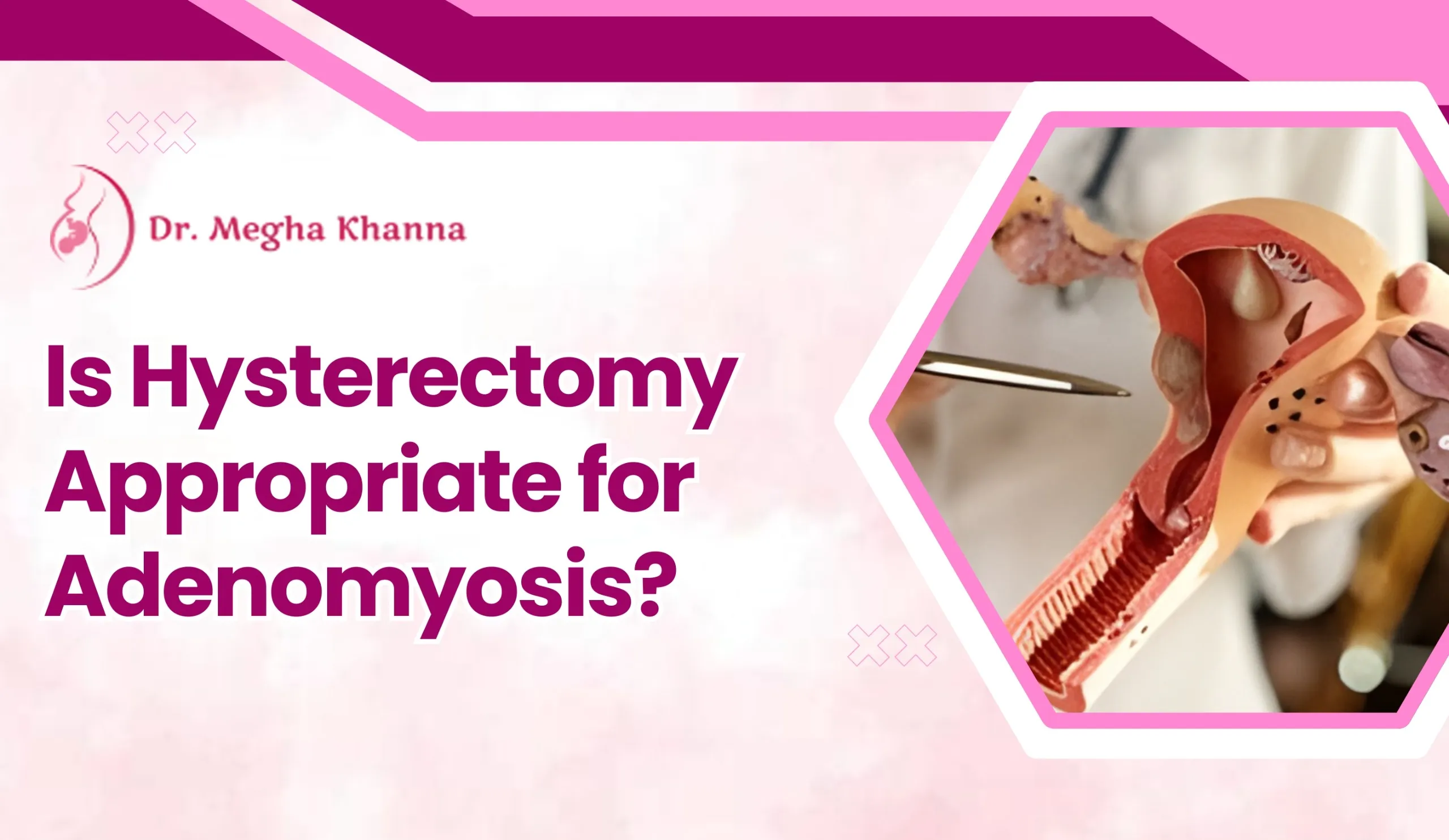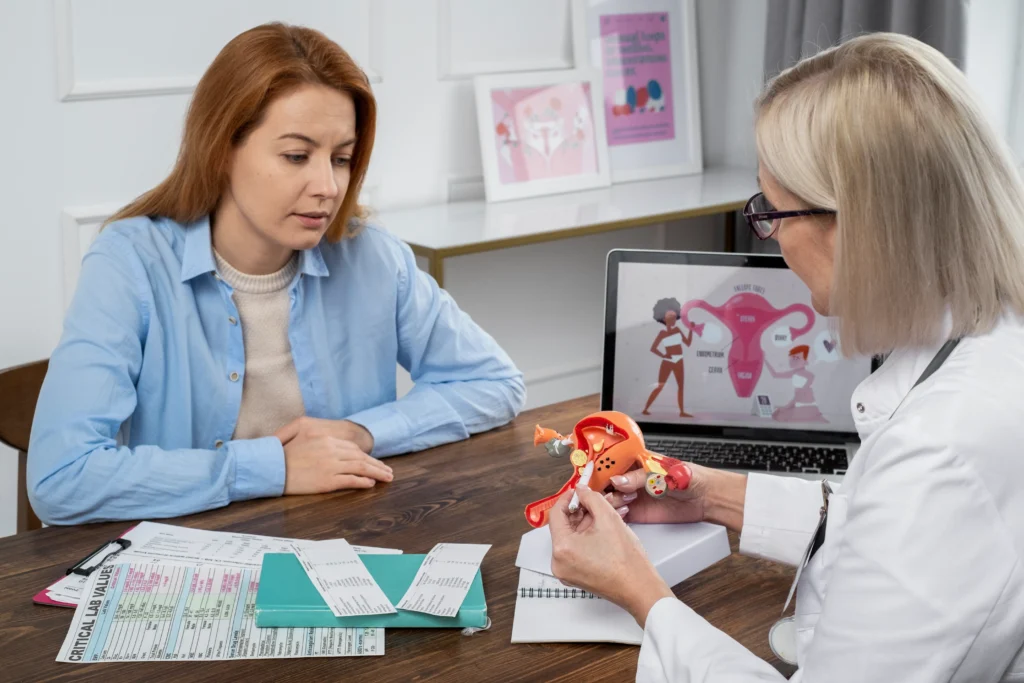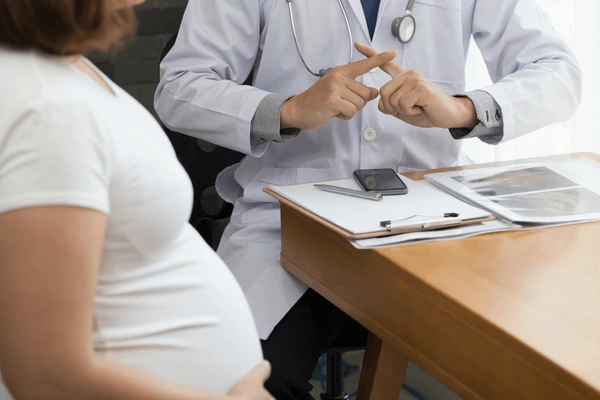-
Ganesh Talkies, Kolkata
Ganesh Talkies, Kolkata

Hello Reader!
Welcome to the blog page of Dr. Megha Khanna, one of the best lady gynecologist in Kolkata.
Adenomyosis is a common yet often misunderstood gynecological condition that affects many women, particularly during their 30s and 40s. It occurs when the tissue that normally lines the uterus (endometrium) begins to grow into the muscular wall of the uterus. This leads to symptoms such as severe menstrual pain, heavy bleeding, bloating, and pelvic discomfort that can significantly impact a woman’s quality of life.
As the best lady gynecologist in Kolkata, Dr. Megha Khanna often meets patients who are confused about whether surgery is the right solution. The most common question women ask is, “Is a hysterectomy appropriate for adenomyosis?”
Let’s explore this in detail.

Adenomyosis is a benign (non-cancerous) condition, but it can cause intense discomfort. The uterine wall becomes thickened and enlarged, leading to painful and prolonged periods. While some women may have mild symptoms, others face debilitating pain that interferes with daily activities.
Before deciding whether hysterectomy is necessary, it’s essential to evaluate the extent of the condition, the severity of symptoms, and the patient’s future fertility goals.
Hysterectomy, or surgical removal of the uterus, is a major procedure. So, is hysterectomy appropriate for adenomyosis in every case? Not always. It depends on multiple factors:
As the best lady gynecologist in Kolkata, Dr. Megha Khanna emphasizes that hysterectomy should be the last resort, chosen only after evaluating all other treatment options.
Before opting for surgery, several non-surgical and minimally invasive treatments can be explored:
Dr. Megha Khanna, known as the best lady gynecologist in Kolkata, advises her patients to explore these options first, especially if they wish to preserve their uterus or plan to conceive in the future.

So, is a hysterectomy appropriate for adenomyosis?
Yes — when all other treatments have failed, and the symptoms are severe enough to affect quality of life. A hysterectomy completely removes the source of pain and bleeding, offering permanent relief.
However, the decision must be taken after thorough counseling, physical evaluation, and imaging studies like ultrasound or MRI.
At this stage, consulting the best lady gynecologist in Kolkata, Dr. Megha Khanna, can help you make an informed decision based on your medical history and long-term goals.
Although recovery takes time, many women report feeling much better and more active after the procedure.

Hysterectomy vs Uterine-Sparing Treatments for Adenomyosis
Adenomyosis is a challenging condition, and treatment decisions must balance symptom relief, fertility preservation, and surgical risks. Here is a detailed comparison between hysterectomy—the definitive treatment—and uterine-sparing options.
| Aspect | Hysterectomy | Uterine-Sparing Treatments |
| Definition | Complete removal of the uterus | Includes medical therapies, uterine artery embolization (UAE), focused ultrasound (HIFU), adenomyomectomy, endometrial ablation |
| Symptom Relief | Complete and definitive symptom resolution | Varies; many experience good relief though symptoms may persist or recur |
| Fertility Preservation | Not possible; eliminates future pregnancy | Preserves uterus and potential fertility (though some procedures carry risks) |
| Invasiveness | Major surgery (open, laparoscopic, or vaginal) | Less invasive or minimally invasive, outpatient or short hospital stay |
| Recovery Time | Longer (6-8 weeks typical) | Shorter recovery, often days to weeks depending on procedure |
| Risks | Surgical risks include bleeding, infection, anesthesia complications, bladder injury, persistent pain possible | Lower surgical risk; possible recurrence of adenomyosis symptoms, some risk of uterine rupture in pregnancy after certain surgeries |
| Indications | Severe symptoms refractory to other treatments; no fertility desire; coexisting pathologies | Mild-moderate symptoms, desire to retain fertility, or medically unfit for major surgery |
| Impact on Quality of Life | High symptom resolution but possible persistent pain in some patients | Good symptom control but less guaranteed; quality of life often improved |
| Examples of Treatments | Total or subtotal hysterectomy | Hormonal therapy, levonorgestrel IUD, UAE, HIFU, adenomyomectomy, endometrial ablation |
As the best lady gynecologist in Kolkata, it is key to individualize treatment for adenomyosis: hysterectomy is the definitive cure but not appropriate for women seeking fertility or avoiding major surgery. Uterine-sparing options offer symptom relief with uterine preservation but may come with limitations related to recurrence risk and incomplete symptom control.
In clinical practice, detailed counseling about pros and cons, symptom severity, reproductive goals, and patient preference guides the choice between these approaches to optimize outcomes and patient satisfaction.
If needed, a comprehensive blog or patient guide can be provided incorporating these treatment comparisons for clear patient education.

Hysterectomy is the best option for adenomyosis in patients who exhibit specific factors that predict poor response to conservative or uterine-sparing treatments and have clear indications for definitive management.
Consultation and individualized evaluation by the best lady gynecologist in Kolkata ensures the decision for hysterectomy is tailored to patient needs, medical history, and life goals for optimal outcomes.

Hysterectomy provides long-term and often permanent relief from adenomyosis and related chronic pelvic pain or heavy bleeding, particularly when the entire uterus and both ovaries are removed. Most women undergoing hysterectomy for benign uterine disease, including adenomyosis, report significant and sustained symptom improvement.
In summary, hysterectomy provides robust and durable symptom relief for adenomyosis, with extremely low risk of true disease recurrence. Small percentages of patients may experience persistent pain, typically due to other pelvic pathology, not recurrent adenomyosis.
Read More: Epidural: What It Is, Procedure, Risks & Side Effects

Patient age and desire for fertility are the two most decisive factors influencing whether hysterectomy is appropriate for adenomyosis or should be avoided.
| Factor | Best Option |
| Age >40 & no fertility desire | Hysterectomy appropriate |
| Younger &/or wants fertility | Uterine-sparing treatments |
| Completed childbearing, severe symptoms | Hysterectomy |
| Mild symptoms, wants fertility | Conservative management |
In summary, hysterectomy for adenomyosis is chiefly appropriate in older women who do not wish to preserve fertility, while younger patients or those with childbearing plans are better served by conservative or uterus-sparing therapies. This nuanced, patient-centered approach is the hallmark of the best lady gynecologist in Kolkata.

1. Is hysterectomy appropriate for adenomyosis in all cases?
Not always. Hysterectomy is usually considered only when symptoms are severe and other treatments like medication or hormonal therapy fail to provide relief.
2. When does a gynecologist recommend hysterectomy for adenomyosis?
A hysterectomy is advised when a woman experiences chronic pelvic pain, heavy bleeding, or anemia due to adenomyosis, and no other treatment has worked effectively.
3. Are there alternatives to hysterectomy for treating adenomyosis?
Yes. Options like hormonal therapy, IUD insertion, endometrial ablation, and uterine artery embolization can help manage symptoms in many cases.
4. Does hysterectomy completely cure adenomyosis?
Yes. Since adenomyosis affects the uterus, removing it through hysterectomy provides a permanent cure with no recurrence of the condition.
5. Who is the right candidate for hysterectomy in adenomyosis?
Women who have completed their family, suffer from severe symptoms, and haven’t found relief from non-surgical treatments are ideal candidates for hysterectomy.
To summarize, the answer to “Is hysterectomy appropriate for adenomyosis?” depends on the individual’s condition, age, and treatment history. While hysterectomy provides a permanent cure, it’s not always the first-line treatment. Consulting an experienced specialist ensures that every possible option is considered before surgery.
If you’re struggling with painful periods or symptoms of adenomyosis, consult Dr. Megha Khanna, the best lady gynecologist in Kolkata, for accurate diagnosis, expert guidance, and personalized treatment.
Your health and comfort matter — and with the right approach, you can find lasting relief from adenomyosis.